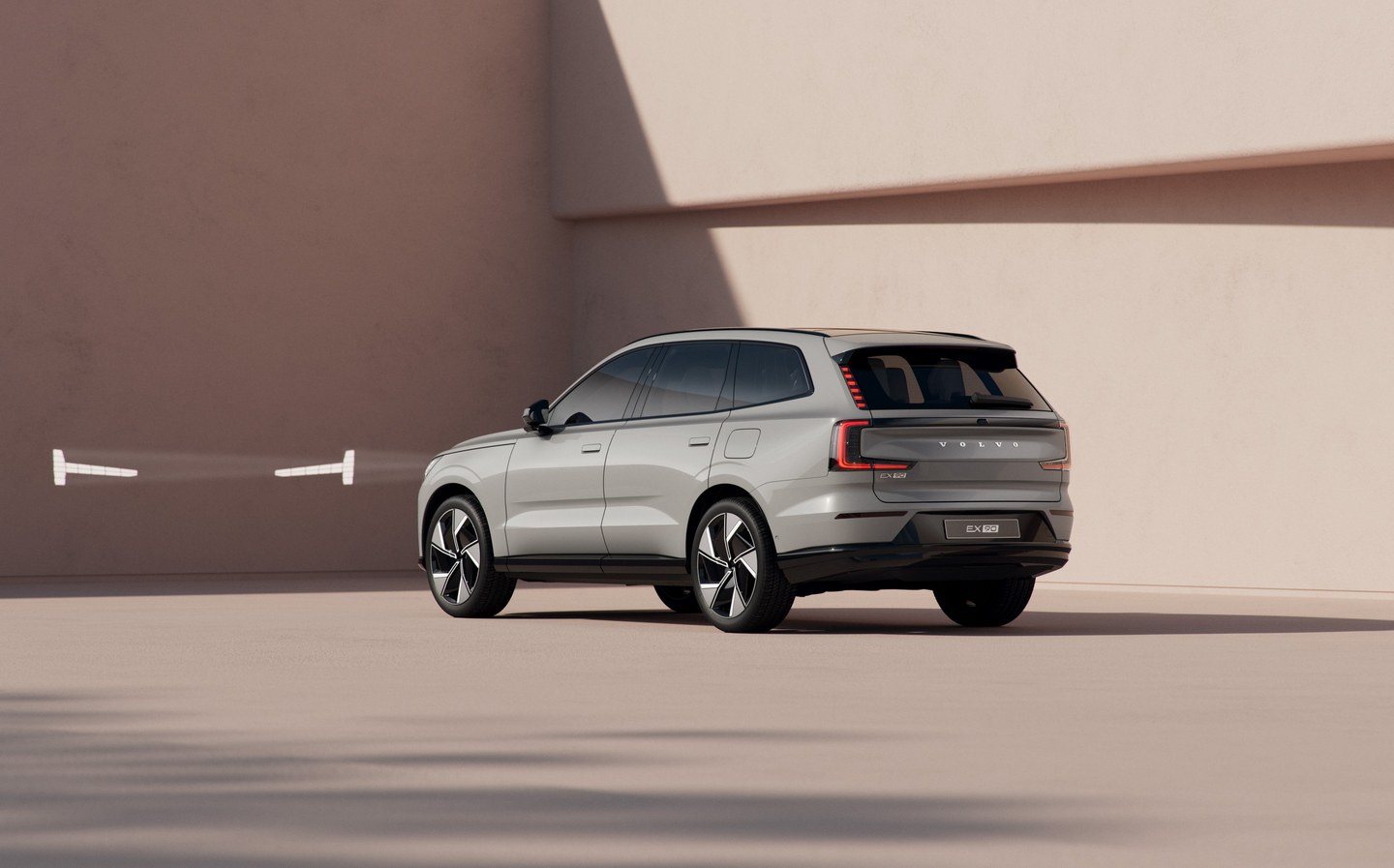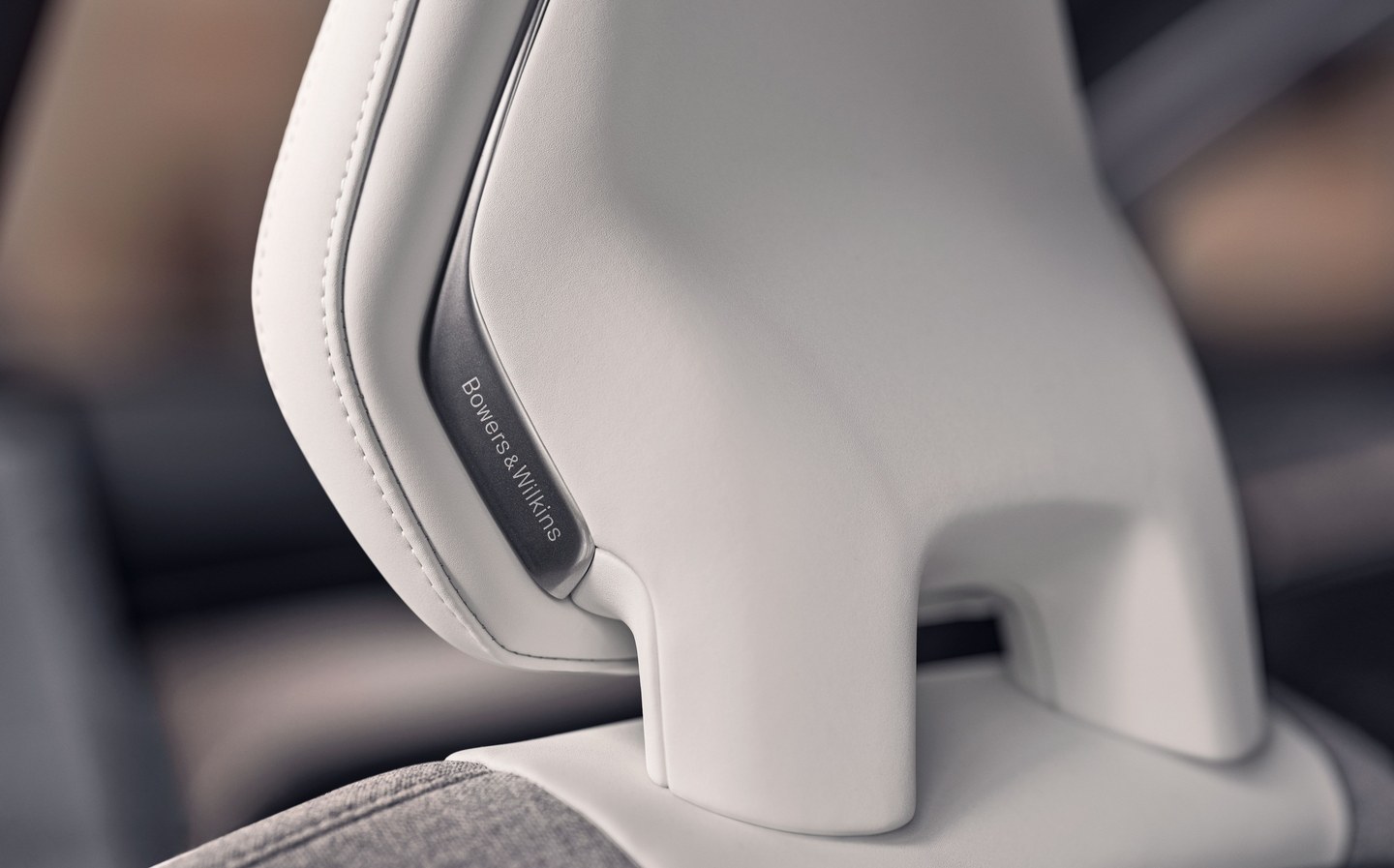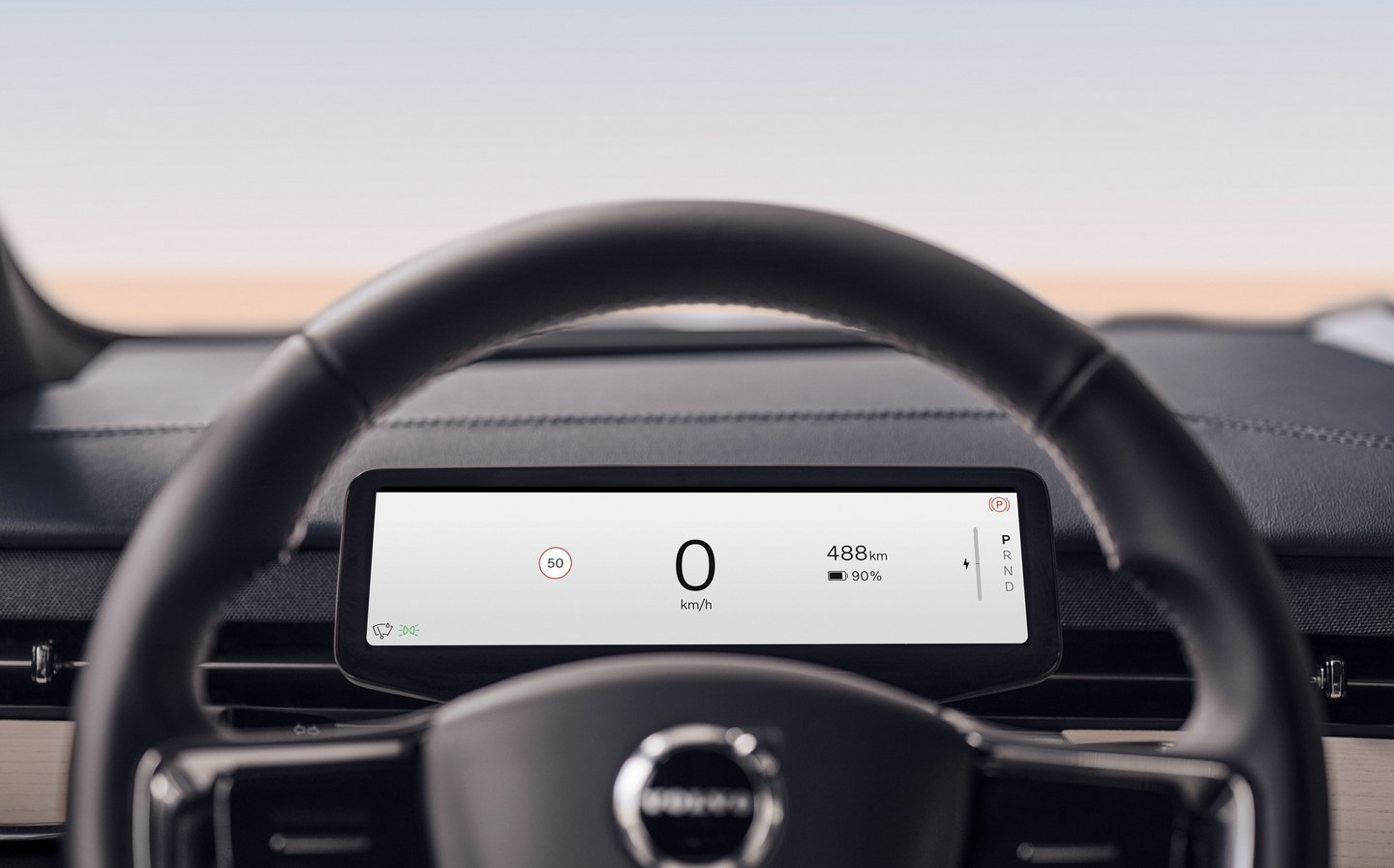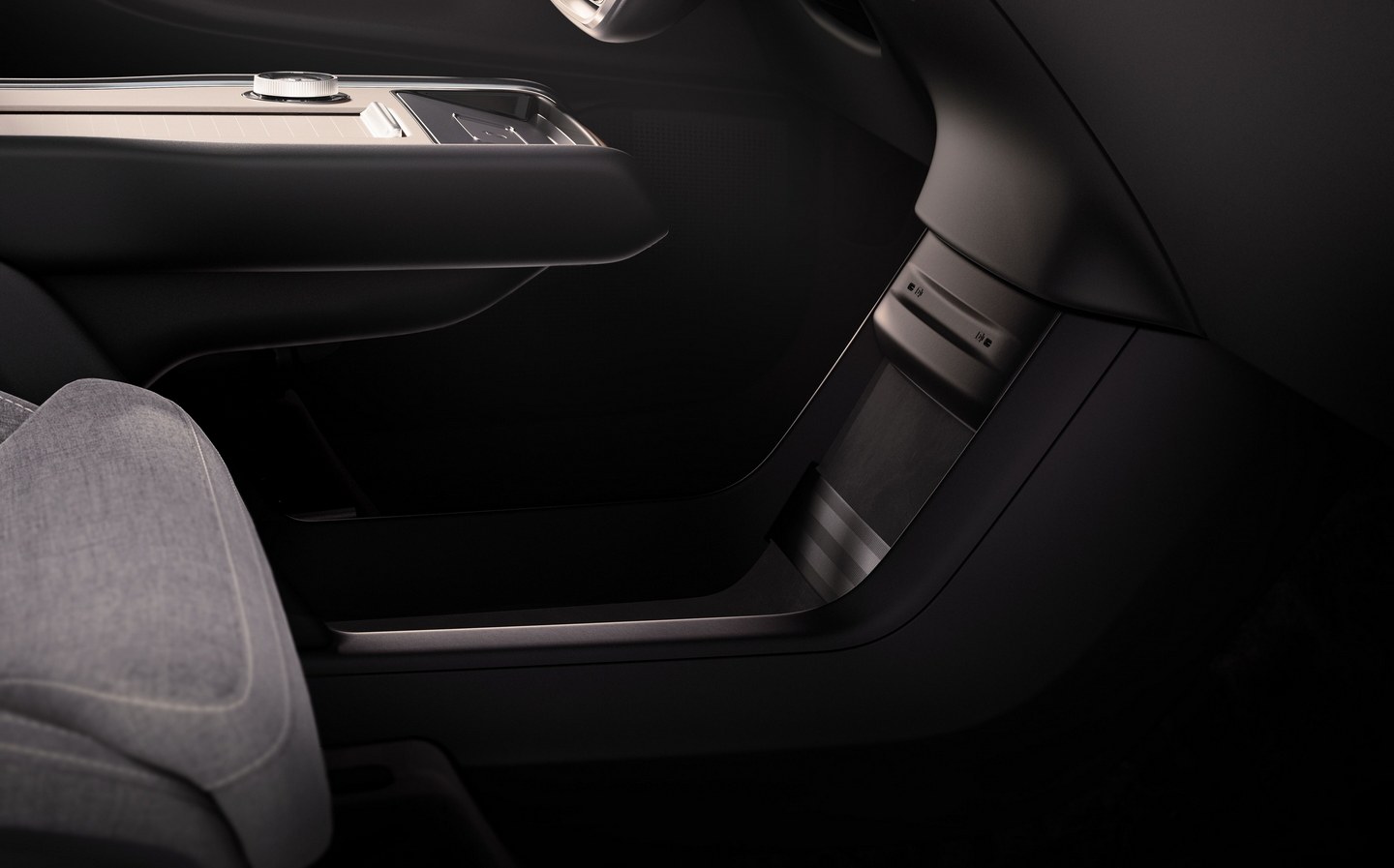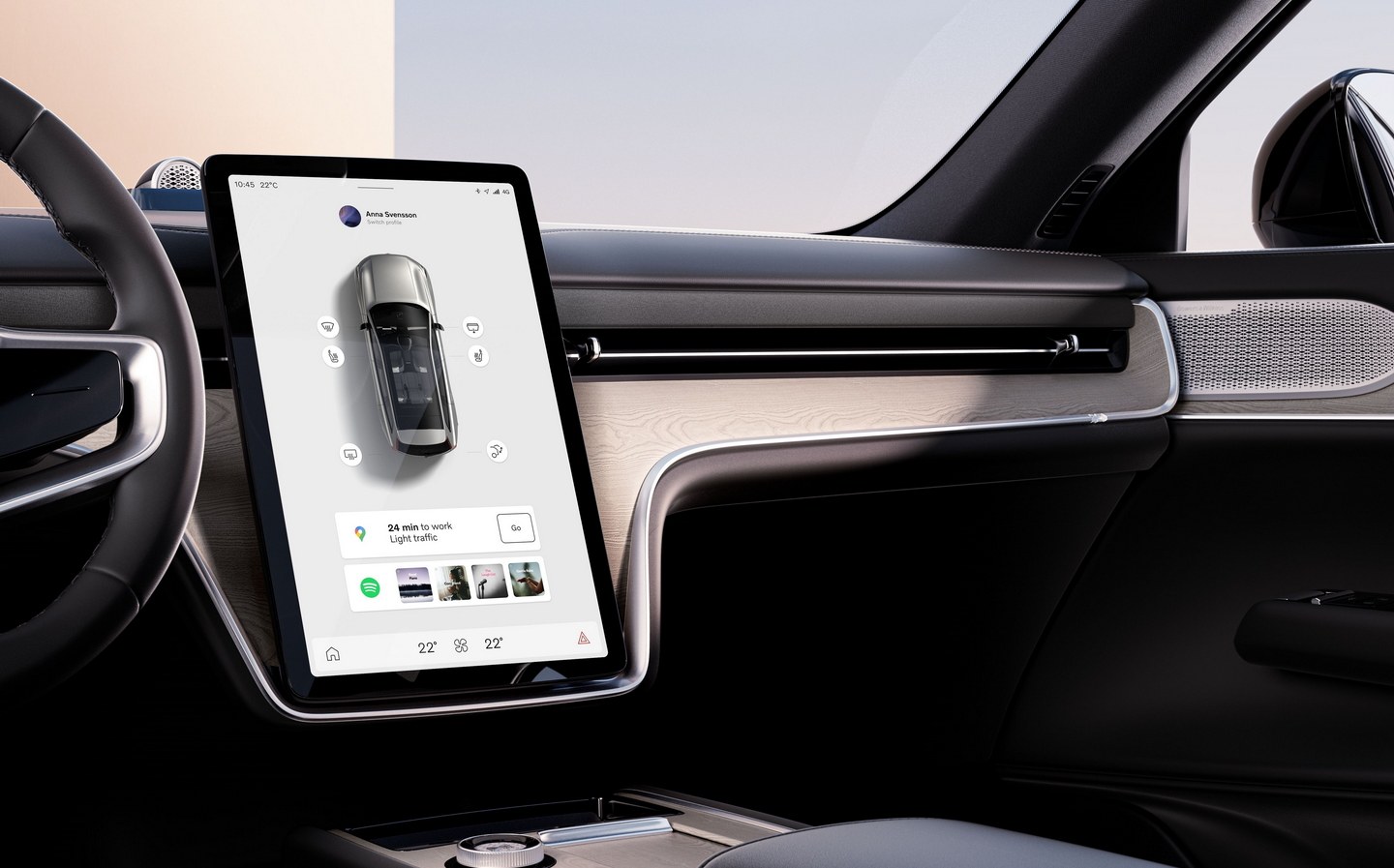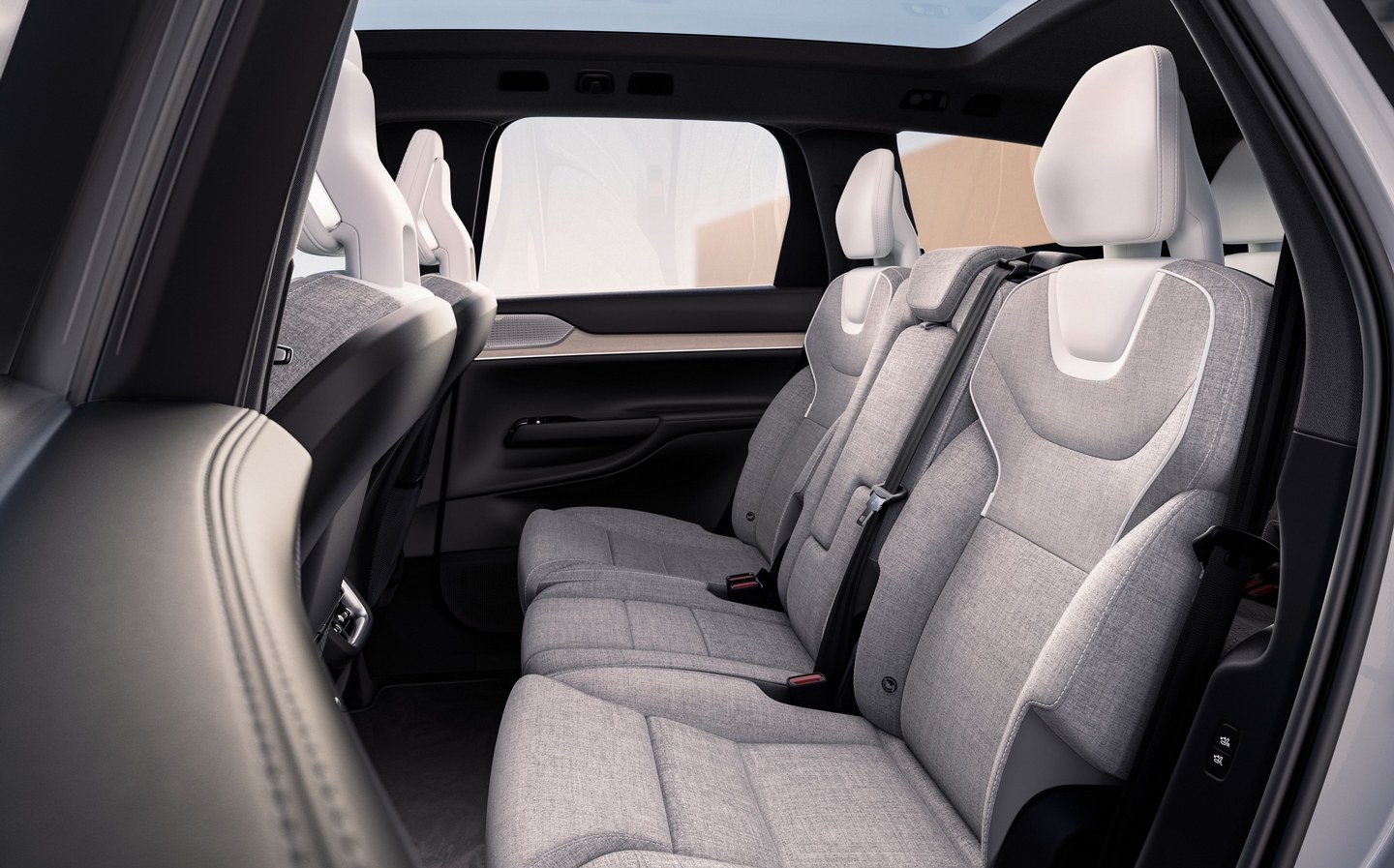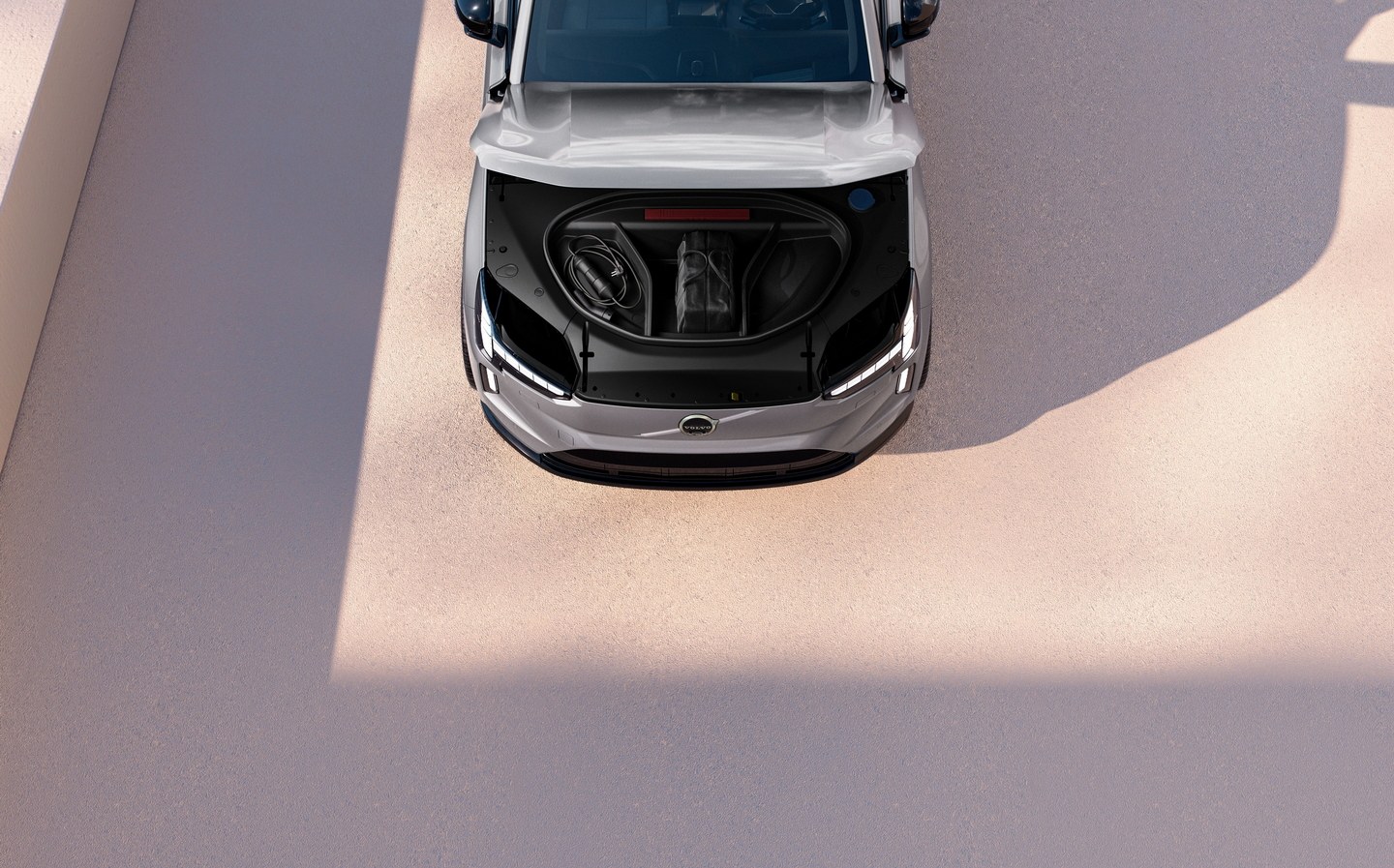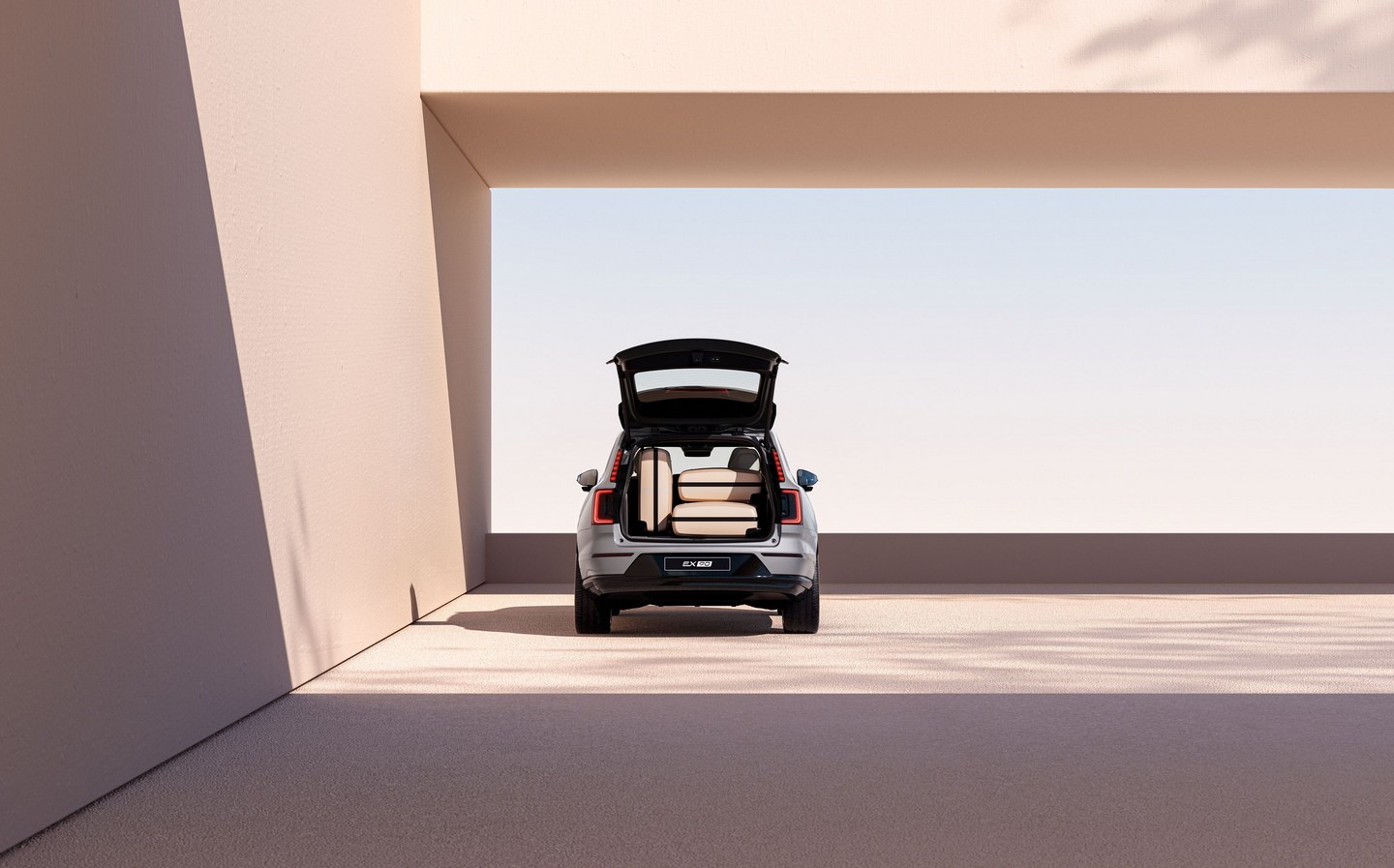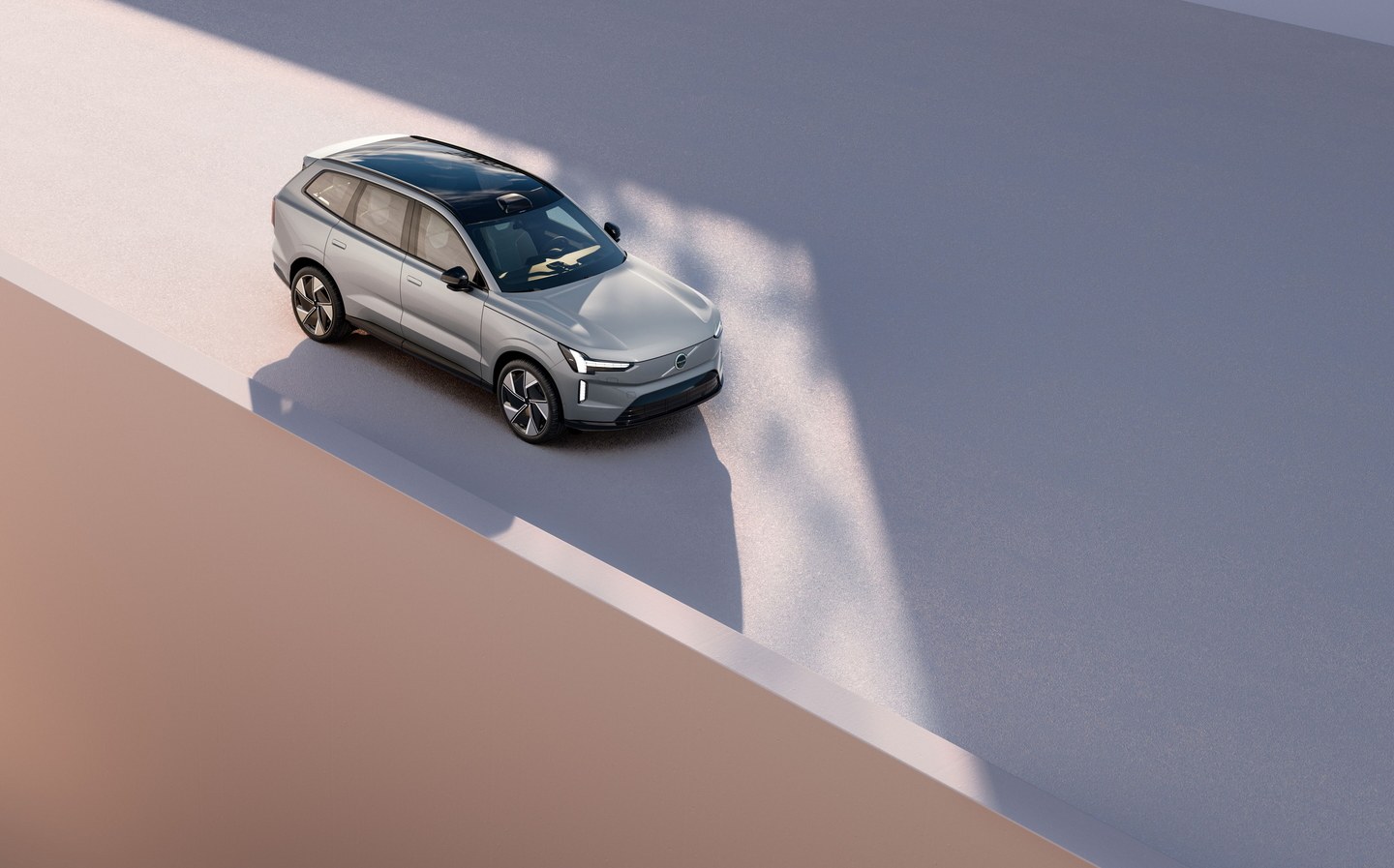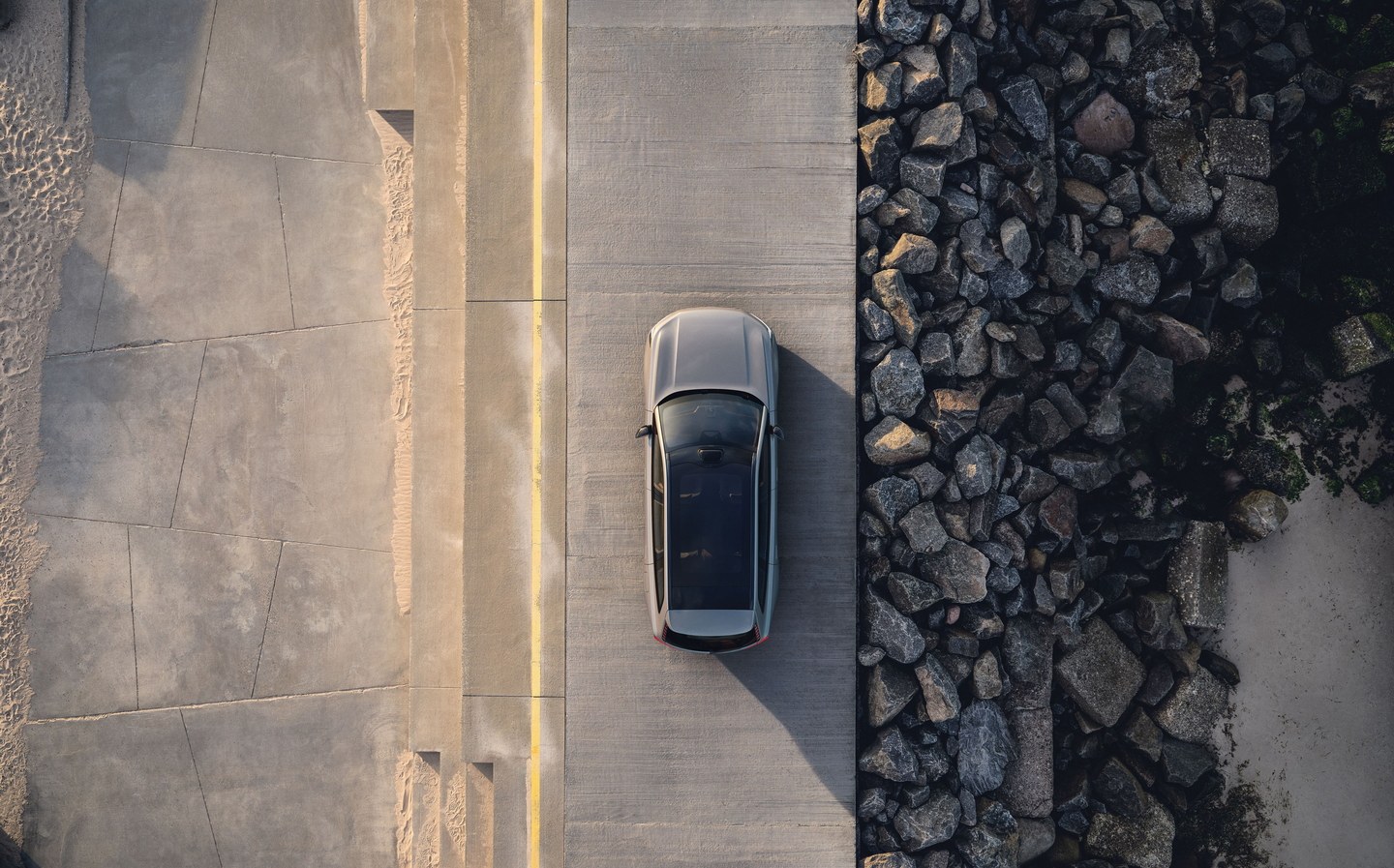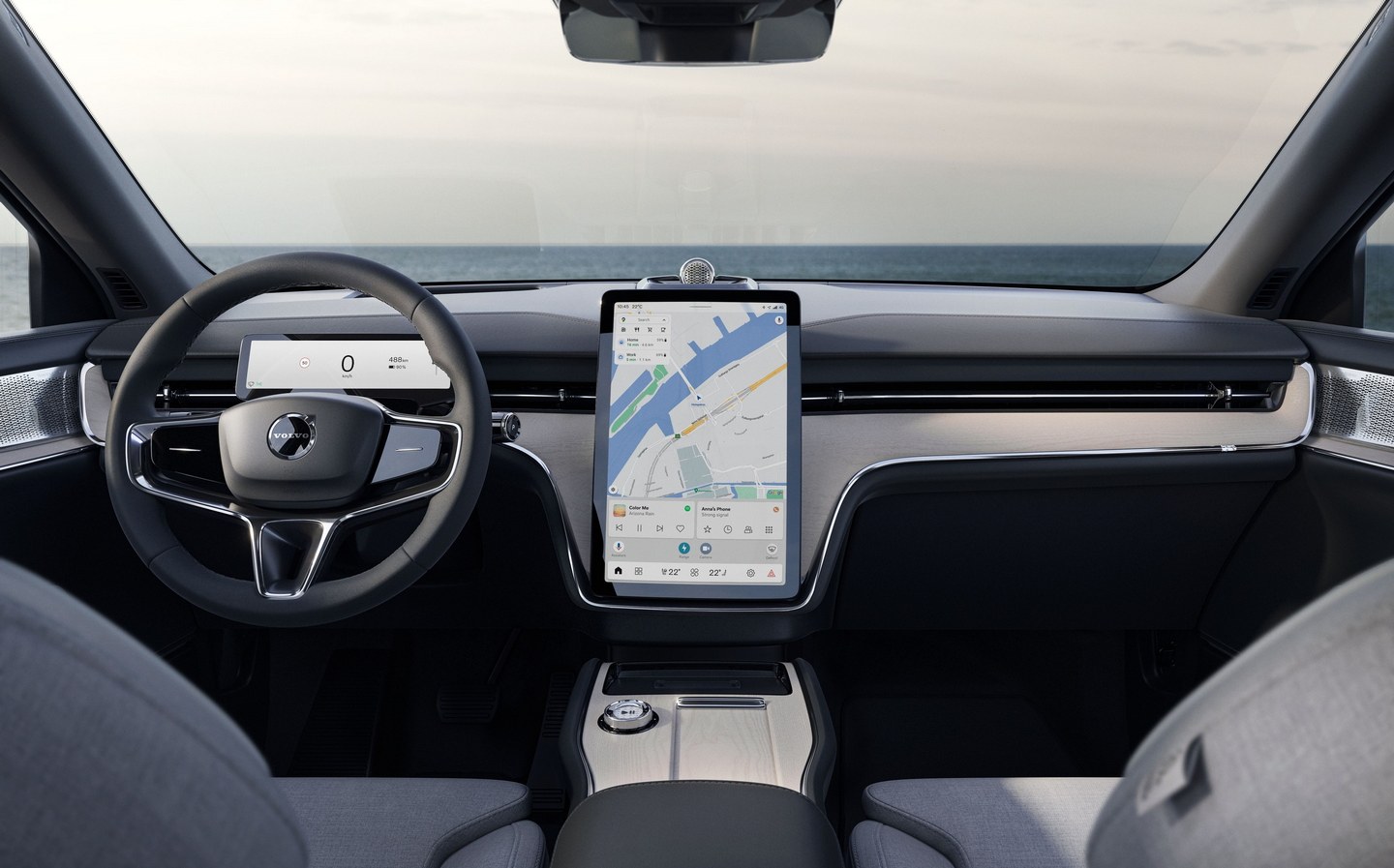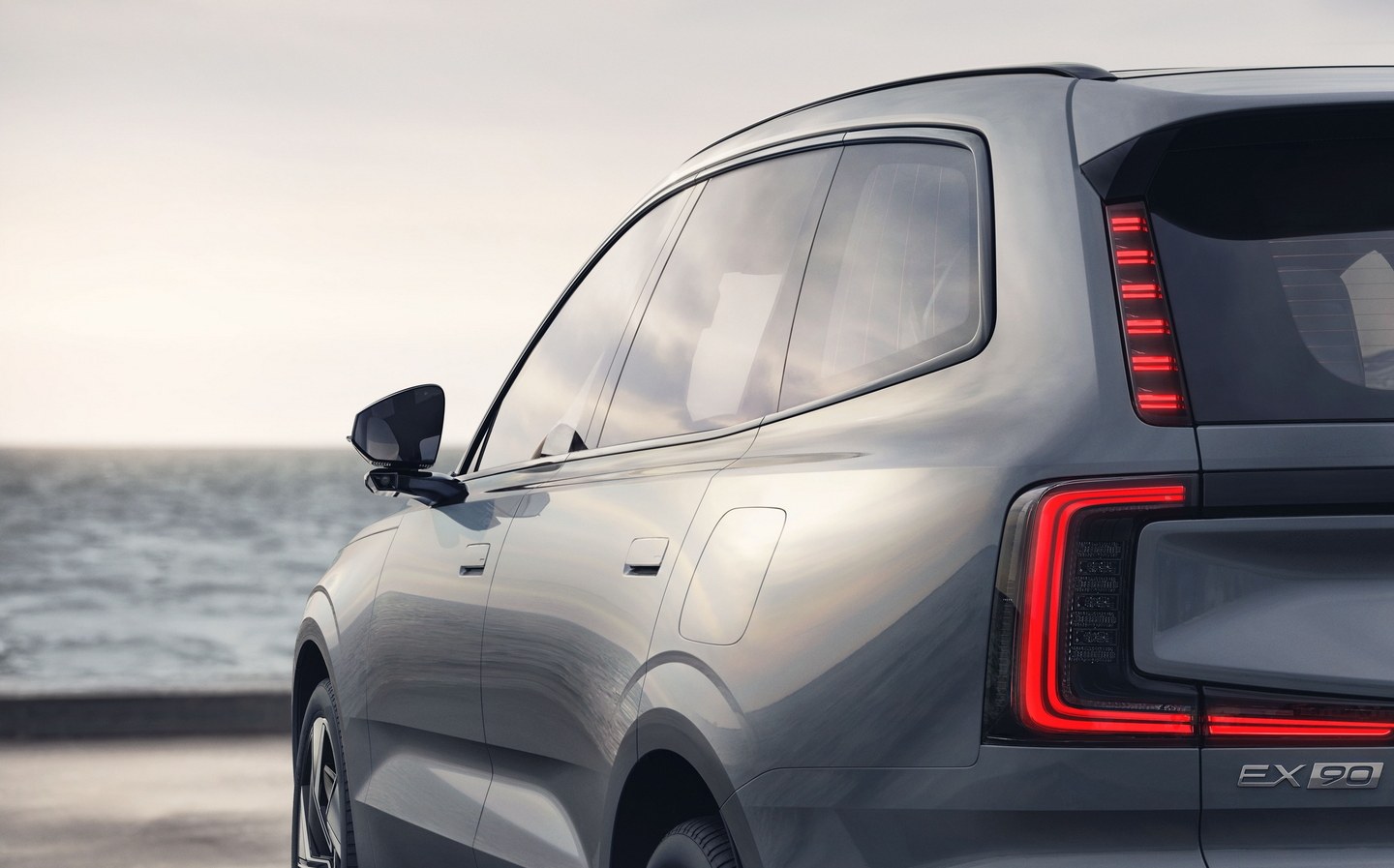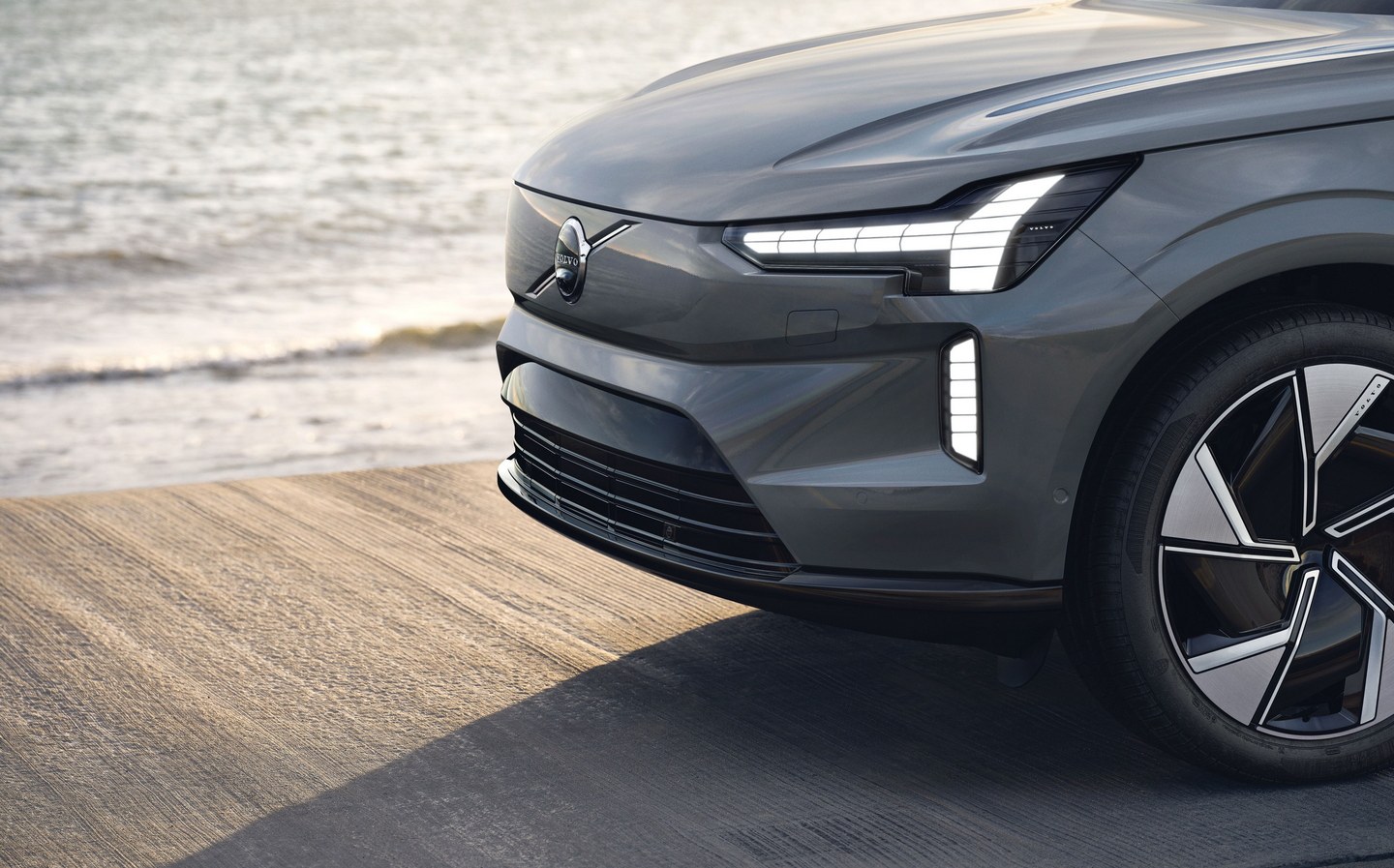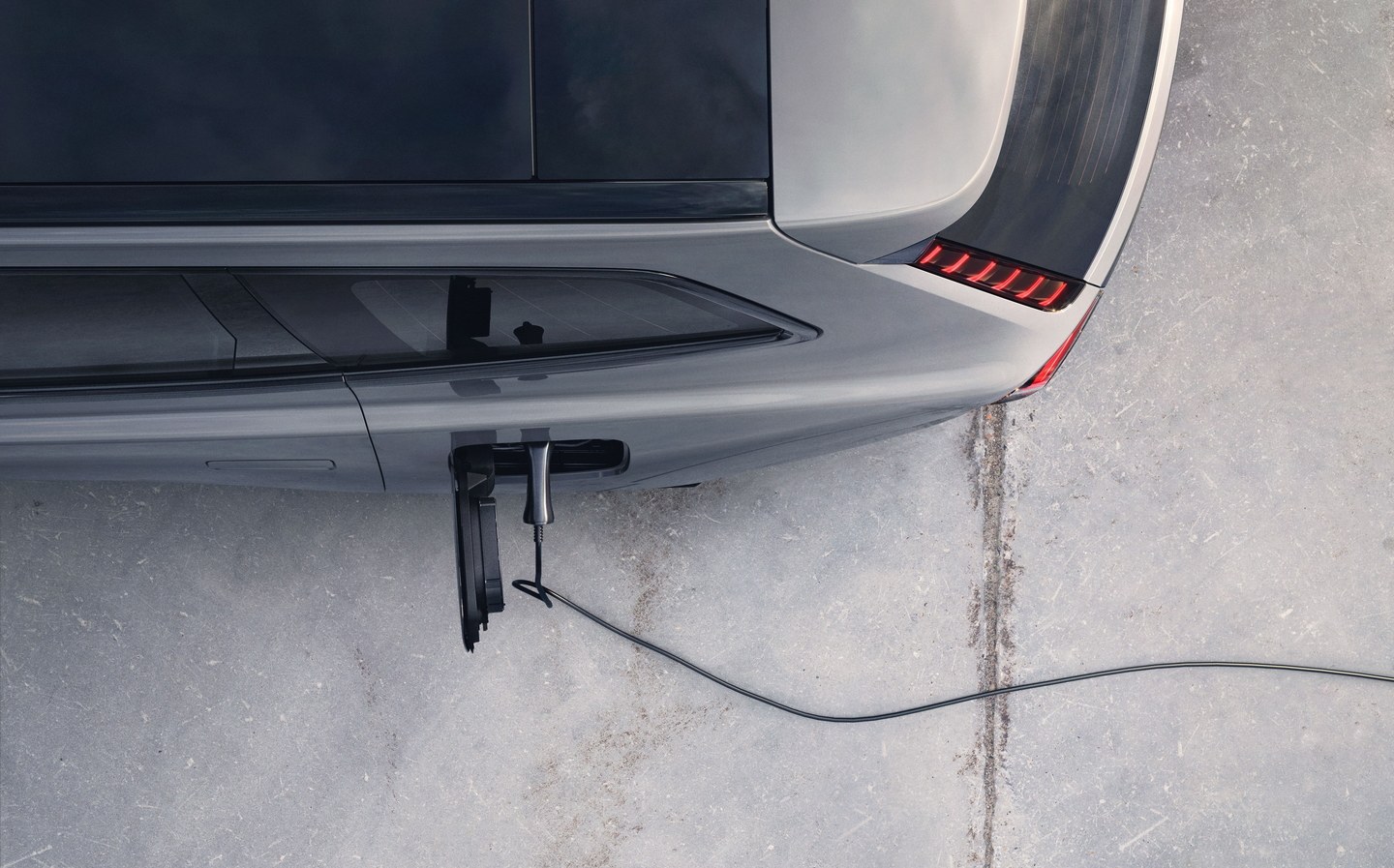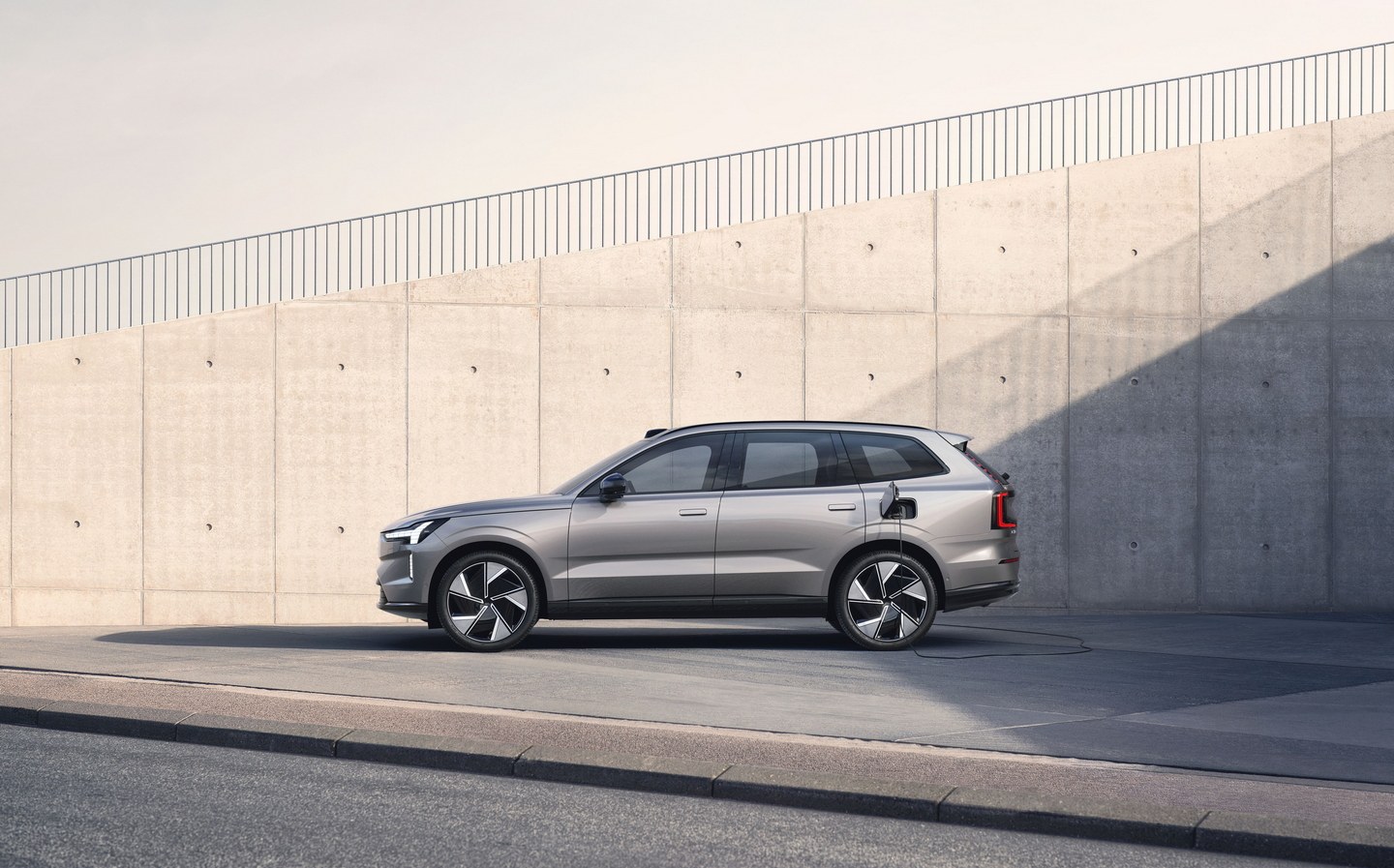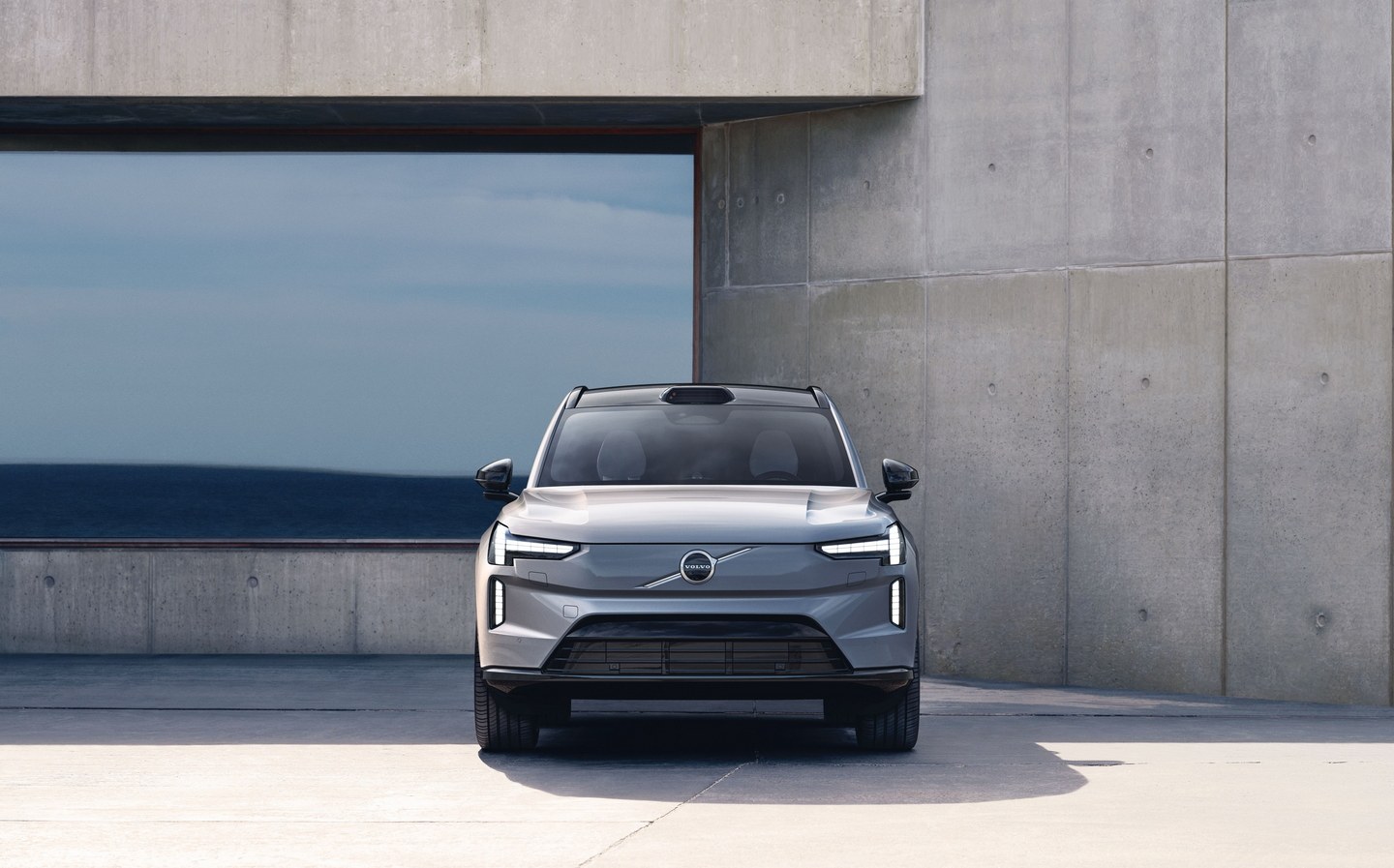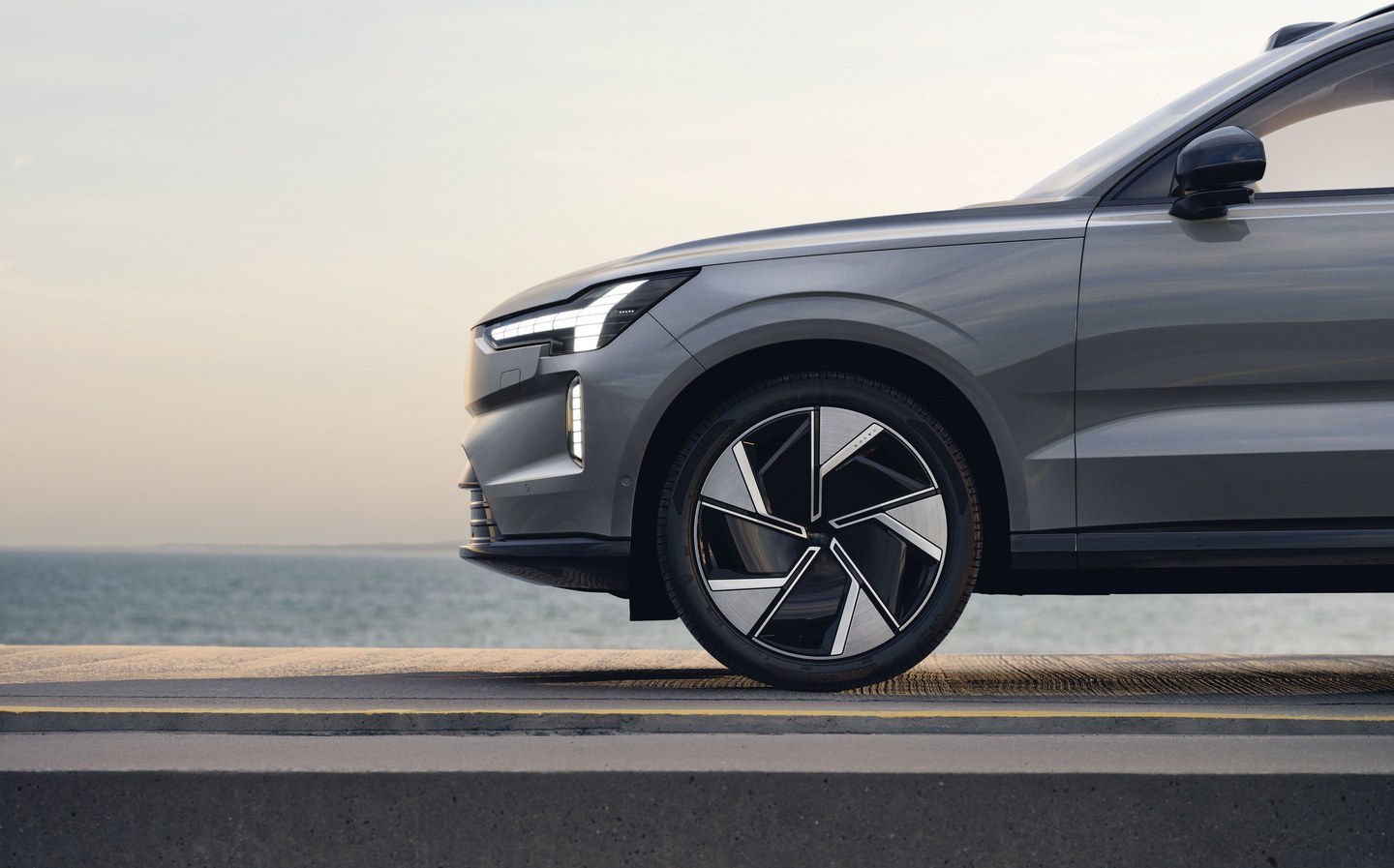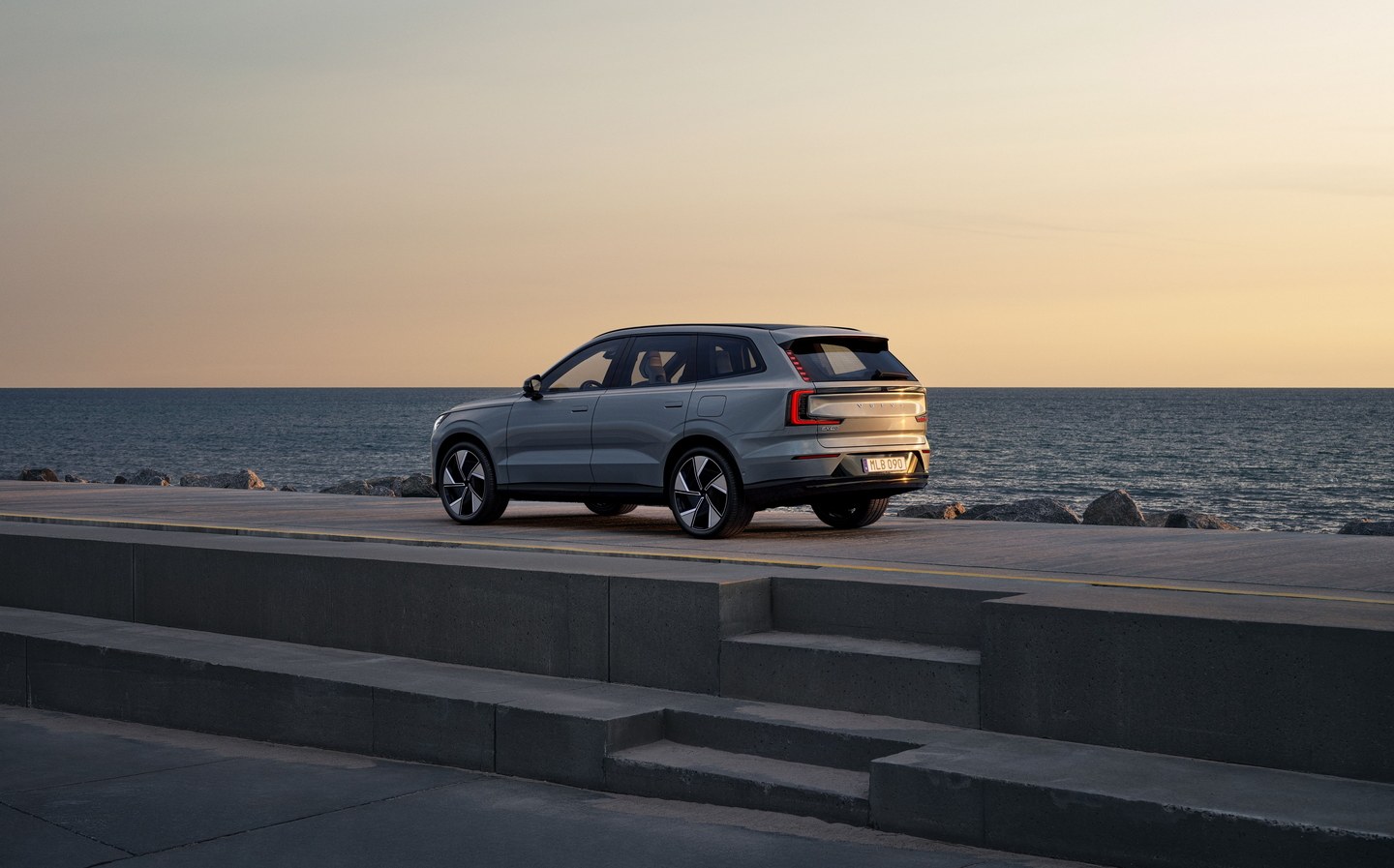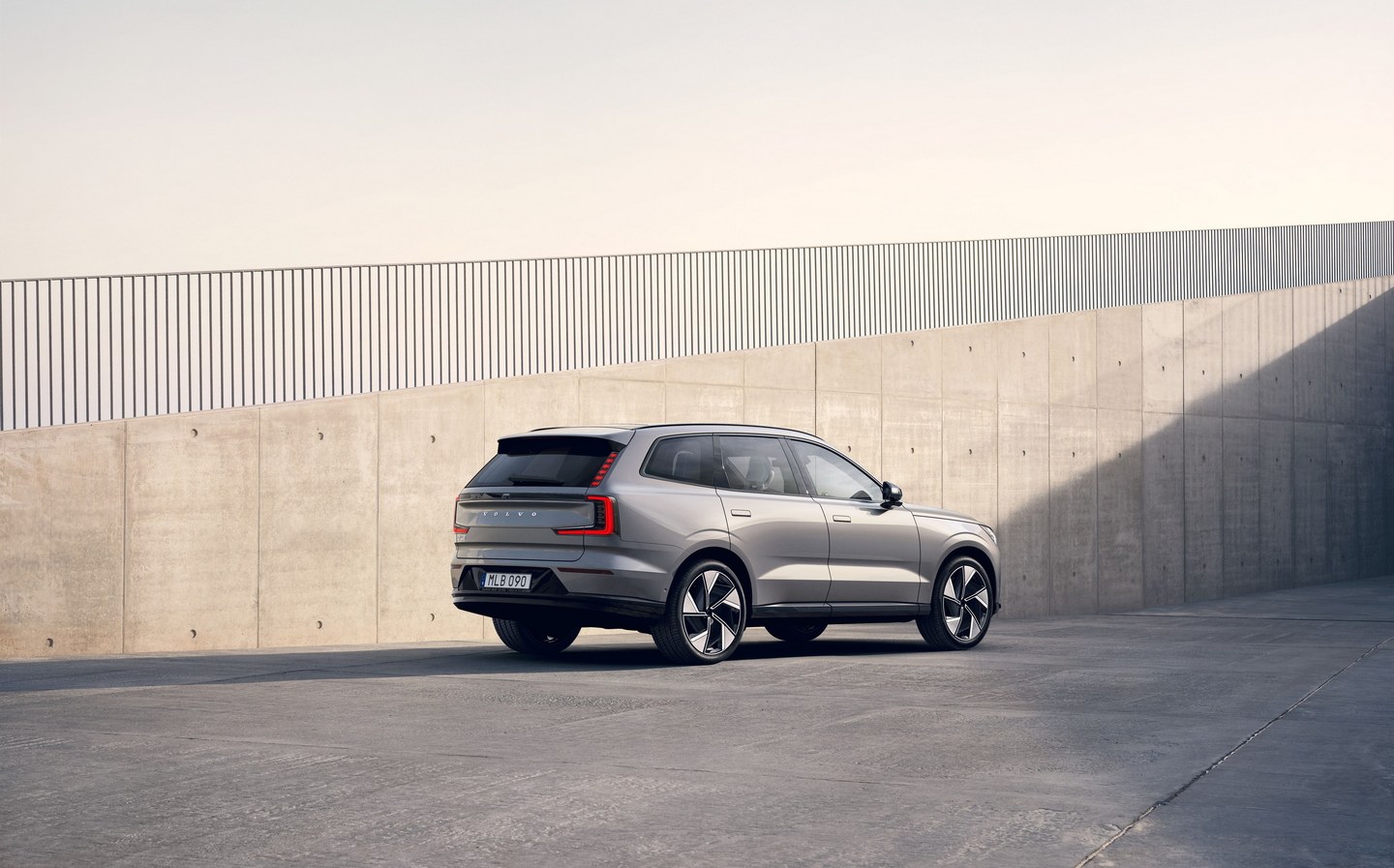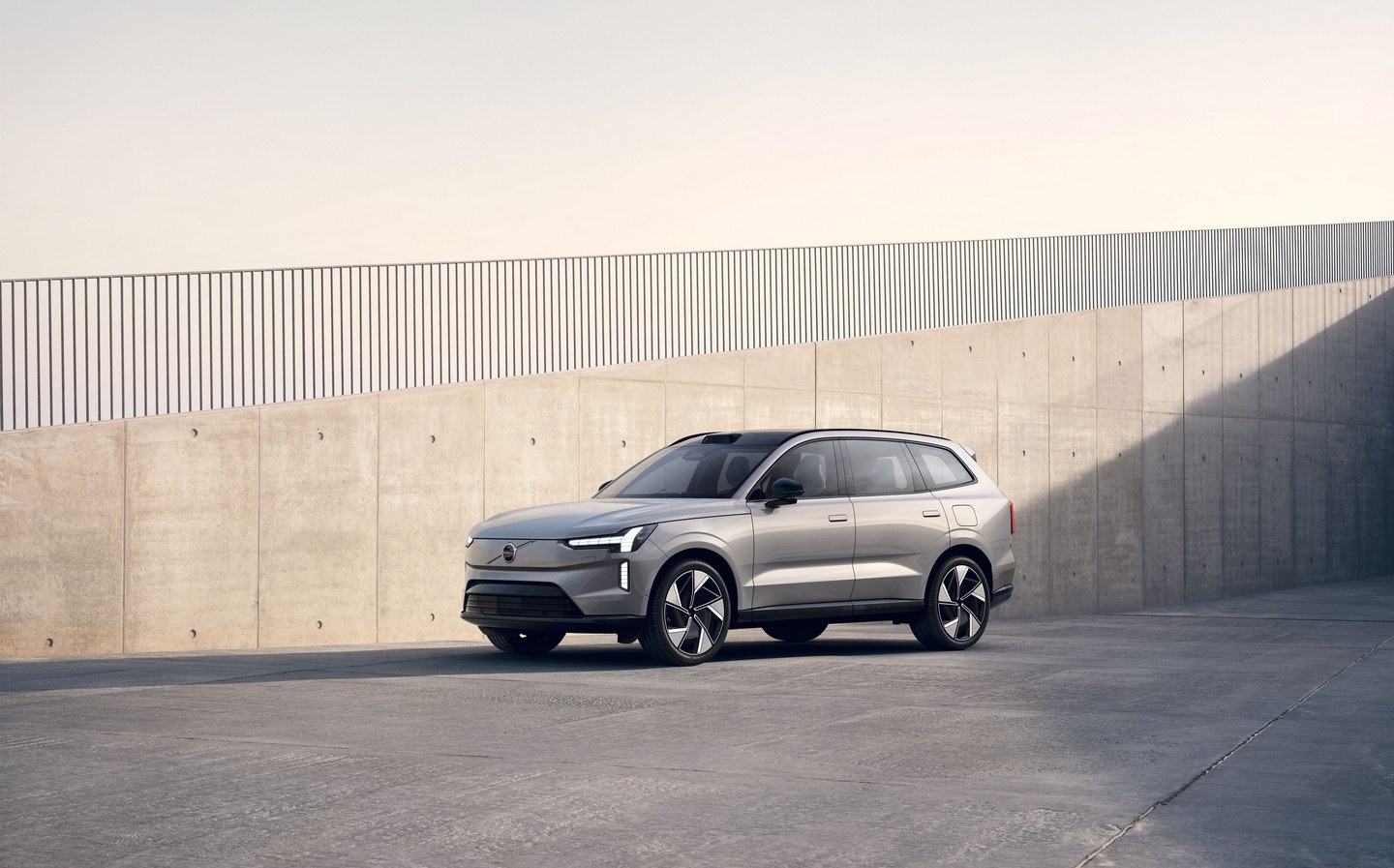Here's Volvo's electric replacement for XC90, featuring 373-mile range and abundant safety tech
Pricing and arrival date still TBC
Volvo has revealed the EX90, the pure-electric successor to the Swedish carmaker’s acclaimed seven-seat SUV, the XC90.
While the firm has only revealed the electric model for now, it is expected that hybrid and plug-in hybrid variants will follow further down the line, though whether they’ll retain the EX90 nameplate remains to be seen.
The reveal of the new model is part of Volvo’s push towards a fully-electric line-up by 2030 and the firm says that between now and then it will launch at least one new electric car every year.
Looking at the exterior, the EX90 isn’t a radical departure from the outgoing XC90 with its styling very much an evolution of that model’s and incorporating a number of familial design cues.
There’s the blanked-off grille and T-shaped “Thor’s Hammer” headlights of the C40 Recharge at the front for instance and, at the rear, the C-shaped lights of the Volvo S90 saloon. It’s under that familiar-looking body, though, that the EX90’s real value proposition lies.
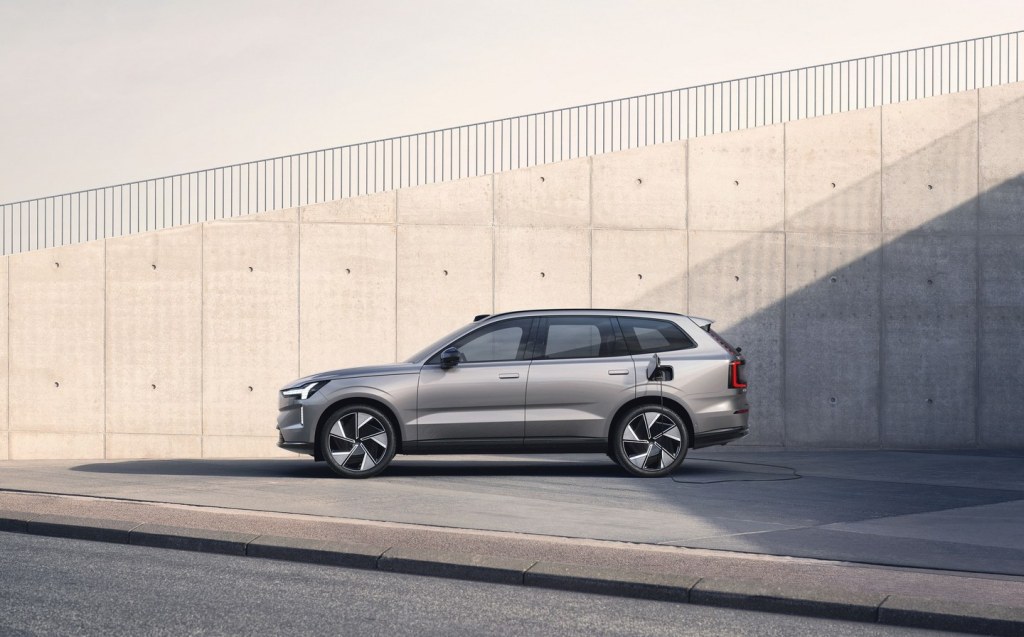
Sharing the same underpinnings as the upcoming Polestar 3 SUV (beside which the EX90 is due to be built in the United States and China), the tech specs aren’t unexpected.
Substantial power at launch
Powering the vehicle is a hefty battery pack with a 111kWh capacity, supplying energy to electric motors front and rear to give the Volvo all-wheel drive, 510bhp, 671lb ft of torque and a range between recharges of up to 373 miles.
As to whether shorter or longer range models with two-wheel drive and a smaller battery will follow on from the launch model has yet to be confirmed, but judging by the Polestar 3, all are feasible.
The EX90 is also equipped with bi-directional charging capability that could theoretically allow owners to power their home in the event of a blackout or, in the future, sell energy back to the grid during periods of high demand to help even out spikes and troughs.
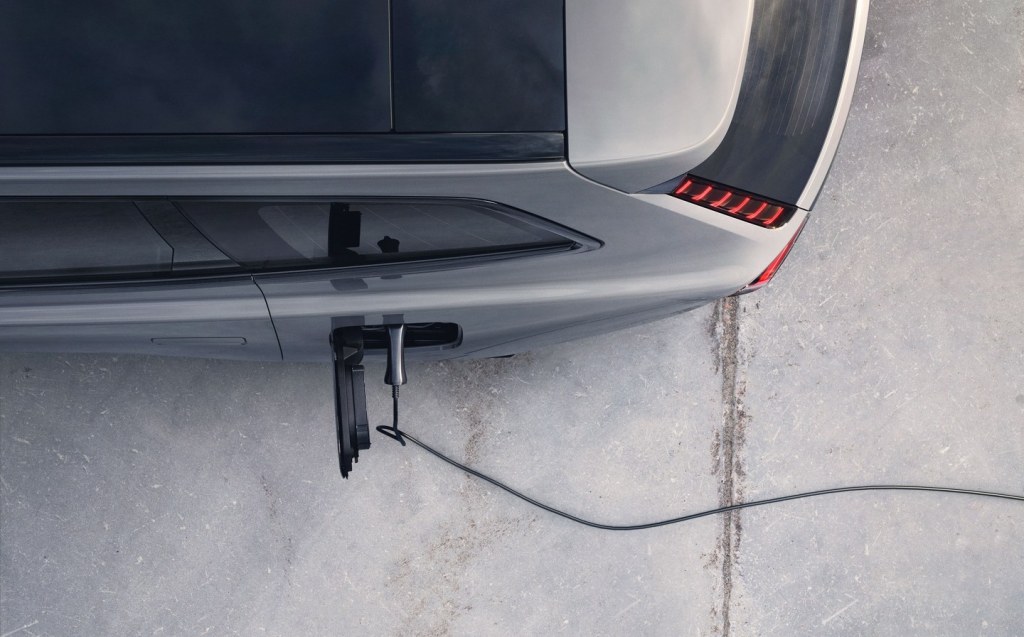
Volvo’s safest car yet
Volvo is billing the EX90 as its safest model to date and the reason for that claim is the sheer volume of safety tech behind the car’s safety and driver assistance systems.
The EX90 is jammed full of Volvo’s most up-to-date safety technology and software including cameras, radar and lidar (which stands for light detection and ranging) all of which, the firm says, has been proven by its research to reduce the number of serious crashes by up to 20%.
All in, the EX90 is equipped with eight cameras, five radars, 16 ultrasonic sensors and one lidar sensor, the latter of which is embedded visibly in the roofline.
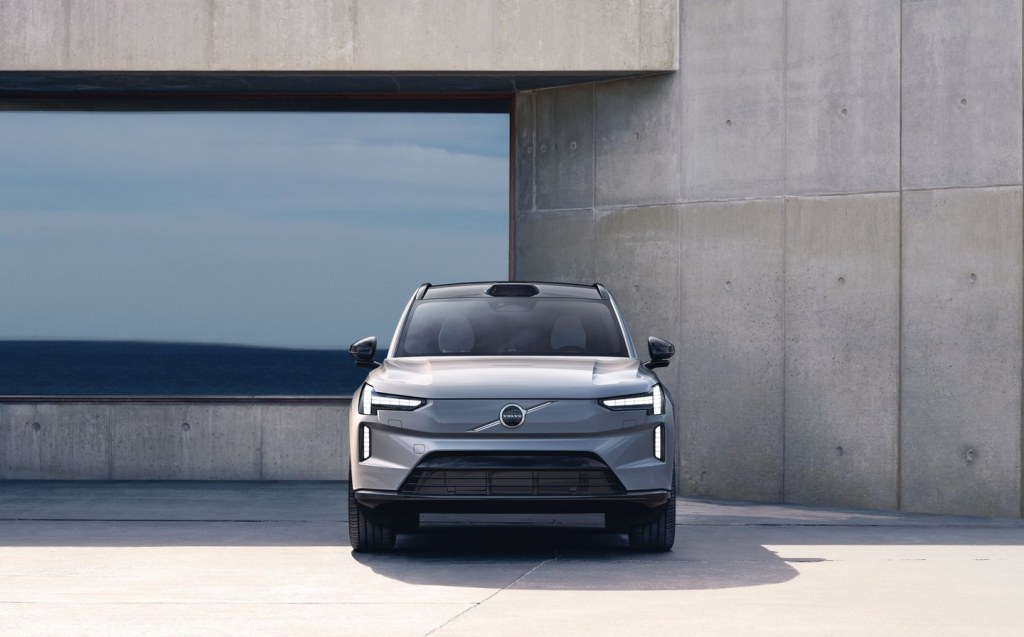
Lidar is a remote sensing method using light in the form of a pulsed laser to measure ranges with a good degree of precision and fidelity in all weather conditions. In a vehicle safety context, Volvo’s lidar system can detect pedestrians at a distance of up to 250 metres and “something as small and dark as a tyre on a black road” at a distance of 120 metres. At night, lidar is more effective than a camera, Volvo says.
Another key safety system is one that detects whether a driver may be drowsy, distracted or incapacitated by using two internal cameras, to pick up on early signals that a driver may not be fit to drive.
By monitoring the driver’s eye patterns and measuring how much of the time the driver is looking at the road ahead, it can detect when their eyes or mind are elsewhere such as if the driver is looking at their phone.
If the system senses that the driver is not paying sufficient attention, a warning signal will sound, increasing in volume depending on the severity of the situation. If no action is taken, the system can switch on the car’s hazard lights and bring the vehicle to a halt by the side of the road.
All of these safety systems, as well as the EX90’s additional infotainment requirements, are backed by an impressive quantity of computational power, not just by the latest NVIDIA and Qualcomm Snapdragon hardware but also by the Unreal Engine 3D visualisation tool developed for video game applications, aimed at serving up high-quality graphics on the Volvo’s interior displays.
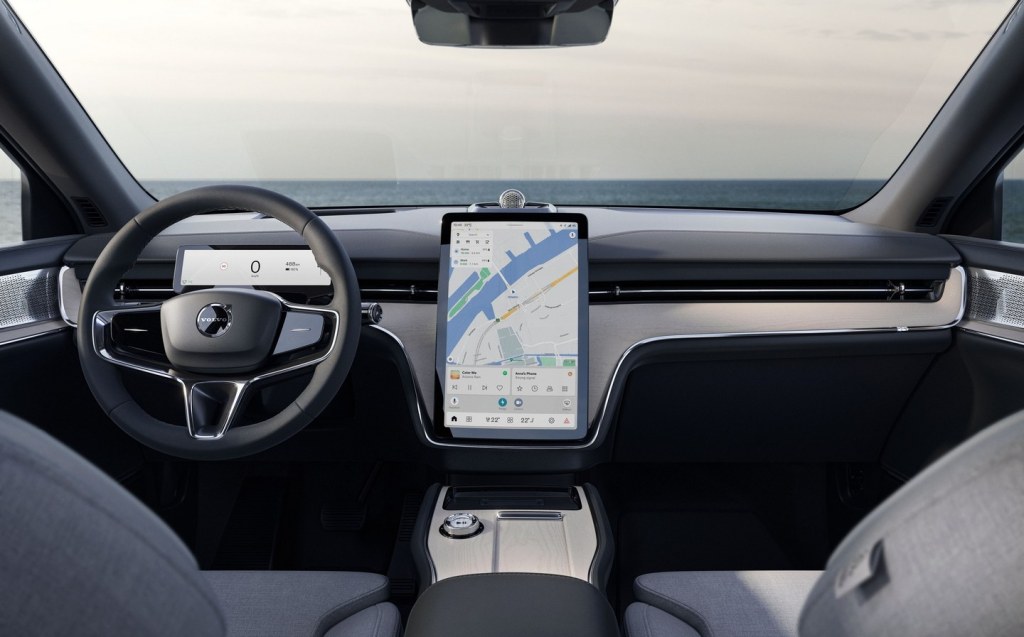
Chief among those is a 15in central infotainment screen running a system co-developed between Volvo and Google and which essentially functions like a built-in version of Android Auto. The system is still, however, compatible with Apple CarPlay.
Also forming part of the infotainment array is a 25-speaker Bowers & Wilkins audio system with Dolby Atmos and speakers built into the seat headrests to provide a more immersive sound experience.
Sustainable materials
As well as being what the company claims is its safest car yet, it also features more recycled materials than any Volvo that has gone before it underlining the firm’s commitment to making its production processes more environmentally sound.
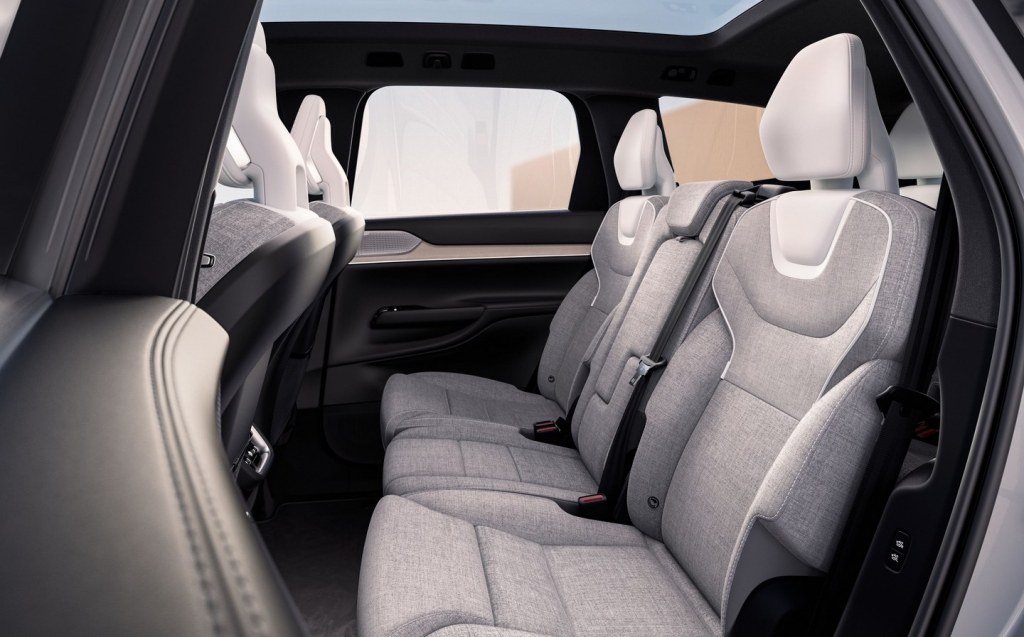
Some 15% of the steel used in the EX90 is recycled, as is 25% of the aluminium. A total of 15% of all the plastics used in the new car is either recycled or bio-based amounting to approximately 48kg throughout the vehicle.
Although expected to arrive sometime in 2023, Volvo hasn’t yet confirmed either pricing for the new model or when UK deliveries will commence.
Related articles
- After reading about the new Volvo EX90, you may also like to check out all the car makers’ electric vehicle plans
- You might also be interested in the EX90’s cousin, the new Polestar 3
- Don’t miss Jeremy Clarkson’s take on the Volvo V90 Cross Country
Latest articles
- Seven great automotive events to visit this summer, from F1 to art and champagne
- Watch new Porsche 911 GT3 smash Nürburgring record for manual cars
- Skoda Elroq 2025 review: Czech carmaker can’t seem to miss with its electric family cars
- Five best electric cars to buy in 2025
- Should I buy a diesel car in 2025?
- F1 2025 calendar and race reports: The new Formula One season as it happens
- Zeekr 7X AWD 2025 review: A fast, spacious and high tech premium SUV — but someone call the chassis chief
- Denza Z9GT 2025 review: Flawed but sleek 1,062bhp shooting brake from BYD’s luxury arm
- Extended test: 2024 Renault Scenic E-Tech review


